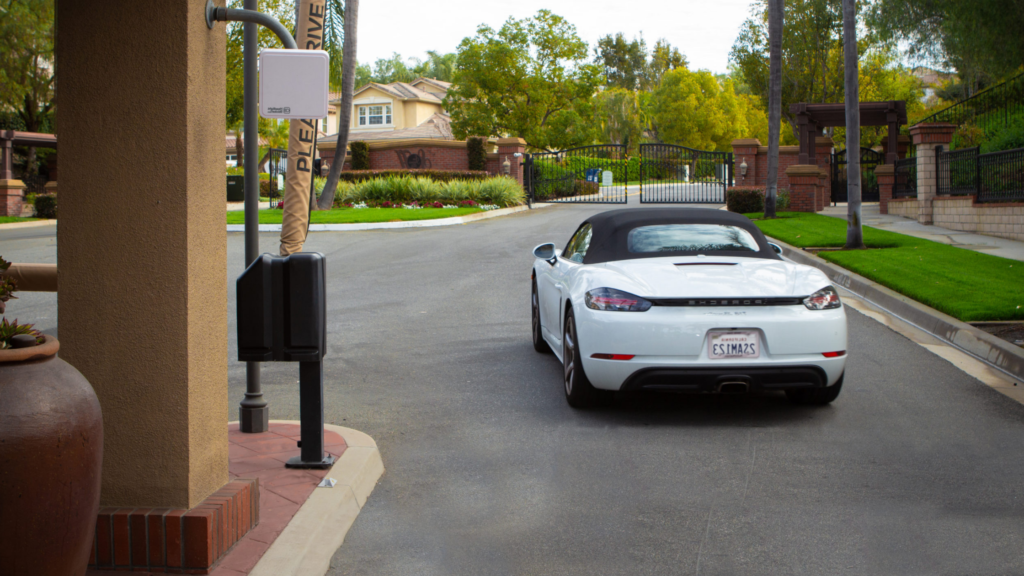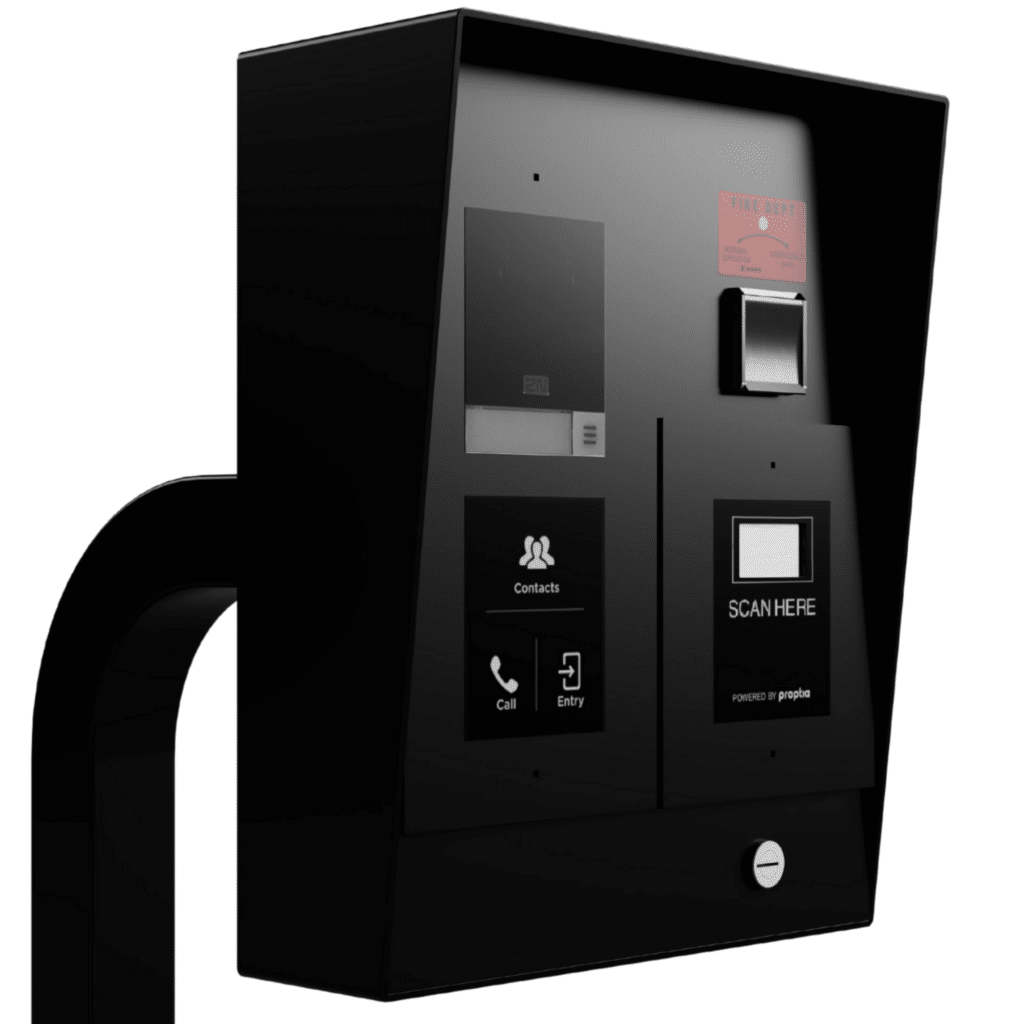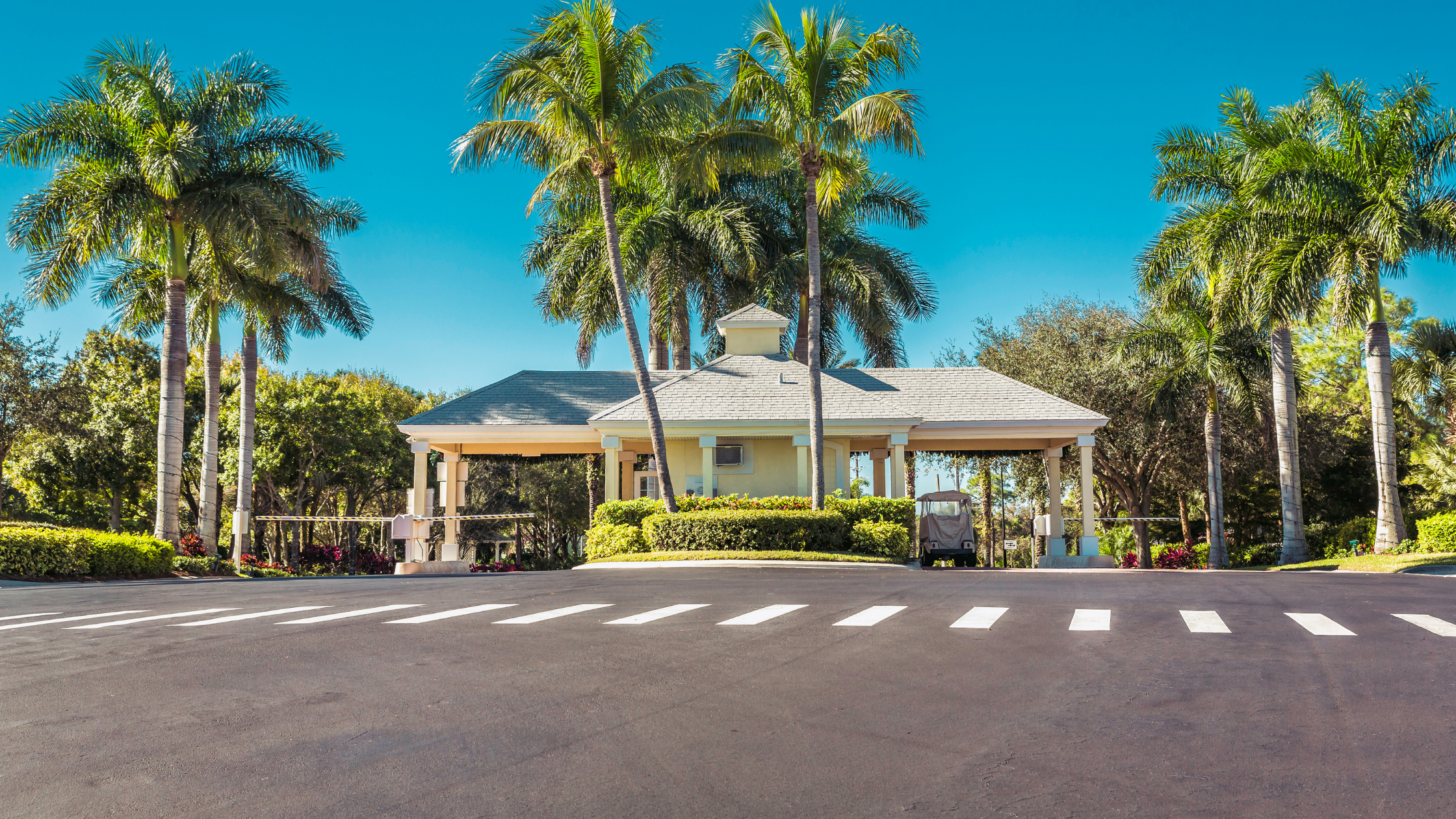Are you looking for gate security systems for your gated community? As a property manager or an HOA board member, the safety of residents and visitors to your community is probably top of mind. With crime and violence rates continuing to rise in the U.S., it’s no surprise that security measures are a significant priority.
In itself, gates can already be a highly effective security measure. But if you’re like most, you’re probably also looking for ways to enhance your access control and visitor management operations. After all, when you combine your existing gate with a gate security system that includes access control, intercom systems, keypads, license plate recognition, and visitor management, you now have an even more secure environment for your residents and their homes.
You’ll notice when doing your research that you’re most likely going to come across the same type of solutions. To help you, we will briefly outline the 5 security systems common in residential gated communities.
In addition, you’ll learn all about
- Integrated HOA gate security systems
- Why gated HOA and communities need
- Gate Entry Systems Basic Components
- An overview of the different types of gate entry systems on the market today
- HOA Gate Systems Pros and Cons.
What is a gate security system or a gate entry system?
A gate security system is a collection of devices that help control access to and within an area. A well-implemented security system typically integrates all these devices together, capturing data that allows you to run detailed reports on vehicle make, model, color, type, and plate number as well as access from residents, visitors, staff, and vendors. In addition to capturing the data, a well-implemented system should be able to automate access control as well as give you the ability to monitor each access point remotely.
Why do gated communities need an integrated gate security system?
If you take a look at most gated communities today, you’ll often find that they have multiple entry/exit points that use multiple standalone systems. In fact, it’s not uncommon that communities will have the following systems that do not work with one another.
Not only do you have separate systems governing resident access control and visitor access control, but you’ll also have another system just to allow the visitor to communicate with the resident. Worse, if you have a guard-gated community, then, chances are you will have another system. License plate recognition? That’s another system, too.
Because these are all standalone solutions that don’t talk to each other, gated communities often have a difficult time with system administration, setting controls, and controlling access to data. As a result, you get the following:
- Poor security
- Poor reporting
- Poor resident/visitor experience
After all, these are handled by property managers and staff, who are usually not security or access control experts.
What are the common components of an integrated gate security system?
At its core, a gate security system should have four basic components that integrate with one another into a single software:
- Gate operator – opens and closes the gate using a motor that engages and disengages the gate latch. It can also be a button, switch, or remote that triggers the gate to open or close.
- Lock – secures the entrance to the gated community when the gate is open. This can be an electromechanical lock that works with a key, a code, a fob, or a motorized lock that closes after visitors enter the code.
- Credentials – authenticates an individual’s identity and authorizes the person to access a restricted area within the premises. This can come in the form of an RFID transponder, mobile app, access code, fob, barcode, or proxy card.
- Readers – identifies credentials and tells the system to open or close the gate based on the credential validity. This can be in the form of an RFID reader identifying an RFID headlamp tag, which will send a message to a control panel to open the gate.

What are the types of gate entry systems?
Telephone Entry Units
A Telephone Entry Unit (TES) is a communication device that functions as a door phone within an entrance to a building or mounted at the visitor lane of a gated community. TES systems allow for two-way communication between people (e.g., residents and visitors, visitors and security personnel, visitors and the leasing office). They can be audio-only or include video. Visitors can find the resident(s) name in the directory, call the resident, and the resident can answer and press ‘9’ to grant entry.
Today, gate telephone entry systems are becoming more and more advanced–with the industry moving away from antiquated analog units to IP-based units. Modern units typically have bright touch screen displays and are equipped with smart search, so visitors don’t have to scroll through all of the homeowner names. There is also the option for one-way video calling, so residents can see their visitors in front of the unit. You’ll find that many also have digital scanners that can scan one-time or recurring ePasses, which residents can text their visitors, similar to a Southwest digital boarding pass.
Units with the right software, can also track each engagement in real-time, and store the data for reporting purposes should an incident occur. Furthermore, many of the newer solutions will also take image snap shots of each visitor using the unit, as well as capture their license plate, vehicle, make, model, color, and type.
Pros
- Allows residents to talk with visitors without leaving their property
- Confirms and processes visitors before opening the gate
- Adds a level of security
- Adds convenience and speeds up visitor processing
Cons
- May be outdated depending on the technology
- May be harder to maintain and keep older analog intercom systems
Features you should look for
- Two-way audio and/or video calling – allows visitors to communicate with residents whether they’re at the gate or outside the front door
- Smartphone-based gate intercom with mobile app – allows residents to issue digital keys to visitors via a mobile app
- Issue and withdraw virtual keys and access pins – enables visitors to unlock the gate without needing a physical key or token, and residents can revoke access when visitors are no longer authorized to be in the community

RFID gate access control systems
Radio-frequency identification (RFID) employs radio waves and a scanner to read data from an RFID tag. When an RFID reader sends a radio signal to the tag, the tag’s unique identification number is sent back to the reader.
In most RFID access control systems, headlamp or windshield transponders are used. Each resident is given a registered transponder to use to get entry to the property with the access control system stored in a database. The system then checks to determine if a transponder is registered upon scanning and authorizes access.
Pros
- Less expensive technology compared to biometric access control systems
- Longer lifespan than smartcards and chips (less maintenance)
- Allows the option for non-transferable transponders that deactivate when they are removed from a window or a headlamp, reducing the risk of credential sharing with unauthorized vehicles and persons
- Uses a passive system, which means residents don’t have to fumble with a remote, app, or open their window to scan a fob or card at a reader
- Ability to associate a transponder with a vehicle license plate number, so you can track the vehicle around your gated community
Cons
- Requires a capital expense in the form of the RFID reader
- Must give credentials to residents either in person or mail
- May encounter some resistance from residents who may not want the device on their vehicle even if they are low-profile and inconspicuous
Features you should look for
- Non-cloneable OSDP complaint credentials
- Ability to activate and deactivate from the software either manually or on a set date or duration
- Option to assign a transponder to a license plate and individual for more accurate reporting
Gate Codes
A gate keypad access system is a type of security system that allows users to unlock a motorized gate by entering the correct PIN code on the face of a keypad. This type of access control system has an electric keypad and a motorized gate release. Once the visitor types the right PIN and the gate receives the right signals, the gate release will open.
Why are using gate codes problematic?
Gate codes can start out secure, but eventually, everyone and their cousin will know the code, simply because everyone has to enter it so often. Before you know it, the entire town knows the code to get into your community. Regardless whether the HOA distributes a generic, easy-to-remember access code to all residents or gives a unique one for each address, the result is the same.
Not only can opportunistic individuals be able to gain access to the property, but you’ll have trouble identifying who came in, where it happened, and when it occurred during an incident. A better option would be to enable residents to issue digital ePasses that send out unique one-time codes that deactivate after one use. Visitors may find scanning their passes at an entrance to gain entry more convenient than fumbling with a pin pad or remembering a numerical code.
Pros
- Easy to install a gateway, keypad, or gate lock that syncs with the system
- Provides security since entry can only occur with the correct PIN code or password
- Self-monitors to some extent; if an unauthorized PIN code is entered several times, the system can automatically lockdown
Cons
- Can easily be shared with unauthorized people
- Does not have as many built-in features as a full-fledged security system alternative
- Cannot receive a video feed from the gate
- No way to report who is using the code at any given time since everyone is using the same code
Features you should look for
- Module integrations with other access control systems
- Camera integrations so the system can grant access only after showing a camera image of the resident at the gate (or front door)
License plate recognition
Automatic license plate recognition (ALPR) may not truly be considered an entry method, but it is an effective solution for enhancing security at entry points. LPR cameras capture images of all vehicles entering as well as exiting the community, whether they’re moving or stopped. Upon reading the license plate, the software then identifies the make, model, color, and type of vehicle using artificial intelligence.
Because this data is organized using these criteria, your gated community can run detailed reports on vendors driving white trucks that haven’t left, for example. You can also check for vehicles that have possibly tailgated because they have not been registered as a visitor or a resident.
Pros
- Easy to install a camera at the gate that can read a license plate
- Provides enhanced security since camera is capturing information on vehicles that use the entry and the exit lanes
- Easily collect and store license plate information in the HOA database
- Can segregate resident vehicles from visitors
Cons
- Debate on privacy
- Requires storing/managing a license plate database
Features you should look for
- Capability to read both modern digital license plates as well as old analog ones
- Cability to grant access for authorized vehicles/visitors.
- Ability to track both moving and stopped vehicles
- Integration with an HOA member database and/or visitor management system so you can verify the license plate number against the registered residents and tenants
- An infrared camera for nighttime reading

Mobile Credentials
For many gated communities, going mobile is the new trend with property managers and HOAs ditching fobs. Not only do these communities no longer have to struggle managing an inventory of physical credentials like fobs and key cards, but they also don’t have to worry about the security risk as well. Fobs and keycards are vulnerable to loss, loaning, and cloning when taking into consideration older systems.
Mobile credentials are also unique per device, which means they can’t be shared, reissued, or cloned. Because you are putting the credential behind the most encrypted device that people own, no one is getting access to it unless they first pass facial recognition authentication or they know the phone’s password. It’s also highly unlikely that residents let their friend borrow their iPhone just so they could use the amenities.
Even better, if the phone is reported lost, managers can go into the software and instantly deactivate the credential remotely.
Pros
- Inherently more secure
- Can be issued, activated and deactivated from the software
- No need to schedule fob, or credential pick-ups
- Significantly reduces installation costs
- Nearly impossible to clone
Cons
- May have trouble with adoption if resident is not tech-savvy
- Requires specific readers that can read Bluetooth Mobile Credentials
Features you should look for
- Should support proximity reading so that gates and doors cannot be opened from miles away
- Can be issued via email directly to the user
- Allows cloud management
- Integrates with the rest of your security systems

Visitor management
A visitor management system can usually be found in guard-gated gatehouses at communities. Guards use this to process visitors on resident visitor lists, printing passes, scanning passes, checking IDs, calling residents for approval, and more.
Modern visitor management solutions will also integrate with your license plate recognition and access control system. This gives your management and security team one central software to manage all facets of your community’s security.
An efficient visitor management system will allow residents to manage their visitor list directly online or from a mobile app. Residents can add visitors and vendors to their list that show up on the system. This enables residents to grant or deny visitors on a one-time or recurring basis depending on your communities rules and regulations.
Visitor management systems are also advantageous when a resident is absent from their home. If the resident calls the gatehouse and asks them to let a friend into the residence, gate staff can verify the request via the visitor management system, let the friend in, and then send a notification to the owner, so they know who has been given access.
Pros
- Helps manage access for residents, their friends, vendors, and family members; reduces the risk of unauthorized access
- Enables residents to send digital passes ahead of time to expedite the check-in process; reduces the risk of residents being unaware that they have given access to a guest
- Integrates with other modules such as license plate recognition, cameras, and event notification
Cons
- Requires gate attendant training
- Requires involvement by the board and management to coordinate procedures that must be taken by security staff as well as residents when issuing visitor passes
Features you should look for
- Ability to integrate with other security systems e.g. access control and LPR
- Ability to issue mobile ePasses (i.e., a QR code or one-time entry code on their phone) that are never recycled for ultimate security
- Power to issue recurring passes for more efficient vendor management

Conclusion
As a property manager or an HOA board member, protecting people and properties is an important responsibility. When choosing security systems for your community, consider all aspects of your job and what the system will enable you to accomplish. Don’t be swayed by technology for the sake of technology—instead, ensure that the technology supports the activities you perform every day.
Once you have decided what security system is right for you, ensure it’s installed to meet your specifications and fulfill its purpose. Finally, be diligent and patient as you exercise your new security system; it takes time to properly learn how to use any new tech tool. The efforts you go through to ensure the protection of people, property, and privacy in your community.
Are you looking for a vendor to help you make the transition? Proptia incorporates visitor management, access control, automatic license plate recognition, and visitor scan kiosks into a single sign-on, cloud-based system. If you’re looking for a complete security system that meets all of your needs, Proptia may be the gate security system that you need for your gated community.
Learn more about how it can help make your life easier as an association manager, property manager, HOA board member, and resident by scheduling a demo today.

